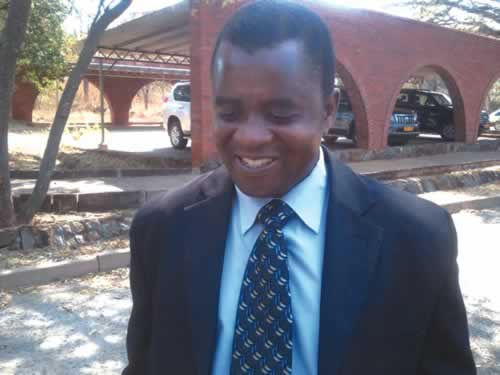
The Sunday News

Judith Phiri, Business Reporter
THE Zimbabwe National Geospatial and Space Agency (ZNGSA) will use remote sensing and satellite imagery to carry out the summer cropping yield estimation before the end of this season as a way of providing timely information for optimum management of growing crops.
Launched in 2018, the ZNGSA has the mandate to enhance the country’s capability to harness space technologies.
It will also make it possible for the country to manage its natural resources and mitigate the effects of climate change.
In an interview, ZNGSA coordinator Mr Painous Gweme said as an agency deployed for earth observation satellites, global navigation satellite systems, geospatial and space technologies, they are working with the Ministry of Lands, Agriculture Fisheries, Water and Rural Development to determine the summer cropping yield estimation.
“Working with the Ministry of Lands, Agriculture, Fisheries, Water and Rural Development we did the winter wheat yield estimation.
Currently with the Ministry we are working on the summer cropping yield estimation. We want to model using remote sensing and come up with the cropped area for specific crops like maize, soya beans and the other small grains.
“We expect to have a crop yield estimate before the end of the season using remote sensing and satellite imagery as we did for the winter wheat estimation in terms of the hectarage and also the yield expectation for the country,” said Mr Gweme.
He said as the cropping season progresses, they would be providing the Ministry with information every three months with regards to crop health, crop maturity and timely information for optimum management of growing crops.
Mr Gweme said using remote sensing and satellite imagery they would be able to tell if the crops are healthy, what is expected for them to grow well and if they have got enough nutrients among other things.
He said: “The summer cropping yield estimation that we are doing will cover the whole country as we zero in to cover the whole cropped areas to see which crops are planted where.
We also expect to use even some ground trooping by Agritex officers and other tools to validate these satellite imagery as we do the predictions.”
Mr Gweme said they also had drones which they would be using for the crop health assessment in specific areas.
He said the other project in the pipeline was potential minerals mapping.
“In terms of the natural resources we are doing what we call the potential minerals mapping of Zimbabwe using the remote sensing satellite imagery to check and see which areas have what type of a mineral.
“This will give a clear image to say in this particular area there is potential of these kinds of minerals so it’s a broad exploration that we are doing and developing.
“We have not yet finished, but we expect that by around June next year we would have finalised the potential minerals map,” said Mr Gweme.
He said since its establishment the agency has been carrying out various projects with the latest being identifying all the wetlands in the country.
“We did the mapping of all wetlands in Zimbabwe and we produced a national wetlands master plan which is currently being used by the Environmental Management Agency (EMA) to do regulations of all the wetlands areas.”
Mr Gweme said as an agency and not a regulator their task was just to develop an algorithm which translated to the national wetlands master plan for the whole country.
Higher and Tertiary Education, Innovation, Science and Technology Development Minister Professor Amon Murwira said ZNGSA was making great strides through developments that are part of the country’s plan to catch up with other nations and become an upper-middle-class economy by 2030.
He said through the agency, the country will witness the growth of a technology innovation environment that supports the development and use of new technologies.
Meanwhile, ZINGSA recently signed a memorandum of understanding with Russia’s space corporation Roscosmos.
The MoU subsequently creates the basis for collaboration in remote sensing training space industry personnel.
The country also recently announced plans to launch its first satellite in 2022.
President Mnangagwa, disclosed that the locally assembled nanosatellite – ZIMSAT-1 – has reached an advanced development stage.



